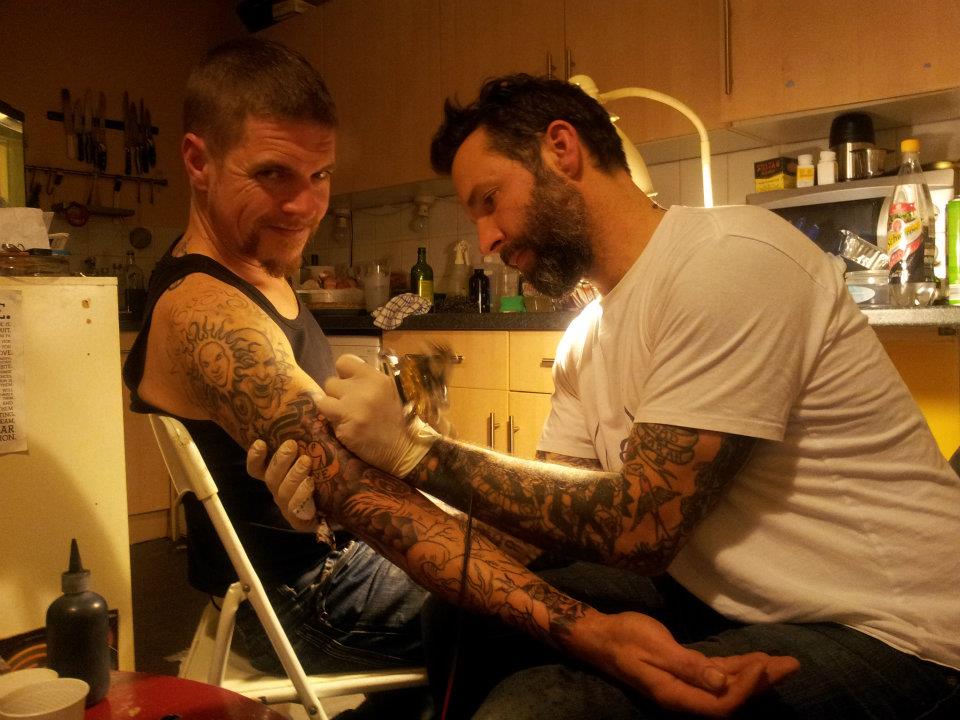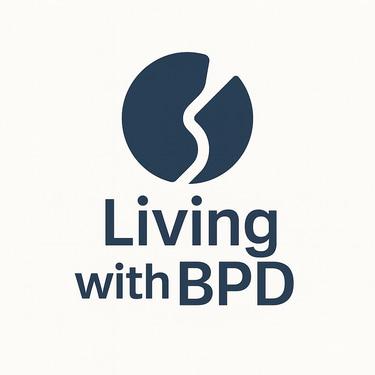You can do it if you want to, but you have to truly want it.




Understanding BPD: A Comprehensive and Human Perspective
A profound, humane, and evidence-based explanation¹,²
Living with Borderline Personality Disorder is not an anecdote, a rarity, or simply a “difficult personality.”
It is a serious and chronic disorder that affects the very core of how a person feels, interprets, and responds to the world around them. It is not just about intense emotions: it is an entire system functioning at full capacity, without sufficient filters, and with a sensitivity that, instead of being a virtue, ends up leaving wounds.
BPD alters three fundamental dimensions of life:
how emotions are felt, how relationships are perceived, and how behavior is regulated.
This translates into a rollercoaster ride that is not chosen, that cannot be controlled at will, and that wears down both the person experiencing it and those who support them.
The disorder does not arise from “ill will,” a lack of character, or poor decisions. It is the result of a complex combination of genetics, innate temperament, and life experiences.
Today we know that between 35% and 45% of the risk stems from genetic predisposition, and the rest is built upon environmental factors: childhood traumas, unstable relationships, emotional invalidation, and chaotic or unsafe environments.
What is inherited is not "being borderline": what is inherited is an extremely sensitive, impulsive temperament that craves connection. In certain contexts, this temperament can become a vulnerability.
For the affected person, daily life is experienced as a constant cycle of action and reaction, a kind of "instant emotional reflex." Sometimes they blame themselves for everything, even for things that aren't their fault.
Other times they feel unable to cope with their own pain and unintentionally project it outward.
The therapeutic work consists precisely of illuminating these patterns, looking at them without fear, and learning to respond differently.
Treatment is neither quick nor easy. Psychotherapy is the central pillar, and it usually requires years: between two and five years of intensive work, plus other follow-up phases throughout life.
Individual therapy helps to put words to traumas, to understand the origin of suffering, and to create strategies for living with less chaos. Group therapy allows for rehearsing, in real time, new ways of relating to others.
In addition, most people need psychiatric support during critical phases: antidepressants, mood stabilizers, or treatments that reduce impulsivity and anxiety.
Even so, many people abandon treatment prematurely. Not out of negligence, but because the disorder itself makes it difficult: low frustration tolerance, fear of abandonment, impulsivity, emotional instability.
Sometimes the relationship with the therapist is experienced as an overly honest reflection.
Sometimes it hurts so much that you can't even walk through the door of the therapy room.
But those who manage to persevere, even with setbacks and relapses, improve. Much more than people realize.
Borderline Personality Disorder (BPD) doesn't just affect the inner world. It also impacts family, work, and relationships.
Those close to them may feel confused, exhausted, or disoriented. The key is to combine affection and boundaries, empathy and firmness, understanding and self-care.
The same person can change depending on the moment: one instant they may ask for help with genuine vulnerability, and the next they may feel attacked and react with anger or fear.
Therefore, providing support requires flexibility and tools, not just good intentions.
Regarding work life, many people with BPD need to redefine expectations. Not because they are incapable, but because certain environments (competitive, rigid, hierarchical, or overloaded with stimuli) are incompatible with emotional stability.
They tend to function better in creative, autonomous, dynamic activities with personal space.
With the right environment, they can lead fulfilling and productive lives.
And here's the important point: BPD doesn't condemn anyone.
It's not a sentence, a label that erases identity, or a predetermined fate. It's a complex disorder that requires work, support, and understanding.
People with BPD feel more, suffer more, react more… but they also have an immense capacity for empathy, intuition, creativity, and commitment when they find stability.
Recovery—understood as living with less suffering, more clarity, and more control—is possible. Not perfect, not linear, not without setbacks. But possible. And real.
This page exists to tell the story without filters, without stigma, and without oversimplification.
To offer rigorous and accessible information.
For those who have it.
For those who live with it.
For those who don't understand, but want to understand.
Because there's a truth that isn't repeated enough: Even with BPD, you can build a dignified, stable, and profoundly human life.
Understanding BPD without myths or stigmas
Table of Contents
Causes and Risk Factors
What BPD is Like Inside
Action-Reaction Cycles and Emotional Patterns
Psychological Treatment: What to Really Expect
Group Therapy and Relational Therapy
Psychiatric Support and Medication
Why Some Treatments Are Discontinued
Impact on Family and Close Friends and Family
BPD and Work Life: Strengths and Limitations
Recovery: What It's Like and What It Means
Notes
1. What does “a complete, humane, and evidence-based explanation” mean?
It means that this page is not a collage of opinions or self-help phrases. All the information is built upon what we currently know from clinical studies, international guidelines, and professional experience with BPD. “Humane” means that the disorder is not reduced to labels; it acknowledges the pain, the context, the causes, and the real recovery process.
2. What does it mean that BPD affects three fundamental dimensions?
BPD is not just about “very strong” emotions. It affects three key areas that underpin daily life:
Emotion: intensity, duration, and reactivity far exceeding the norm.
Relationships: fear of abandonment, emotional dependency, unstable relationships.
Behavior: impulsivity, seeking immediate relief, difficulty controlling actions in stressful situations.
This combination is what makes the disorder so complex and exhausting for those who experience it and those who support them.
2. What BPD is like on the inside
Living with BPD isn't just about feeling "a lot":
It's about feeling too fast, too deeply, and too suddenly.
The emotion arrives before thought, it triggers before you can interpret it, and by the time you try to understand what happened, you're already immersed in it.
People with BPD often experience:
• emotions that change in minutes
• intense fear in minor situations
• a feeling of emptiness that appears without warning
• peaks of anger, sadness, or anxiety that last longer than expected
• thoughts that become extreme from one moment to the next
On the inside, it feels like a nervous system without a filter.
It's not exaggeration, nor is it drama. It's biology, and it's trauma.
The brain interprets neutral situations as threats.
Relationships feel vital, fragile, indispensable.
A word out of place can hurt like real abandonment.
A small conflict can feel like an emotional disaster.
It's not a choice.
It's not manipulation.
It's not a "difficult personality."
It's real suffering that manifests in the body, the mind, and the way we experience the world.
Even so, the more we learn to recognize these peaks, the greater our capacity to regulate them becomes.
With appropriate therapy and time, what was once an avalanche becomes a manageable wave.
It doesn't disappear entirely, but it creates space to live, to breathe, and to make decisions.


3. How BPD affects relationships: intense, real, and sometimes painful bonds
Borderline Personality Disorder (BPD) isn't just an internal experience. It's lived out in relation to others. It affects how we love, argue, support, ask for help, and set boundaries. Relationships become stages where the inner world of the person with BPD is amplified.
It's not that they "make a scene." It's that they feel without a filter.
It's not that they "manipulate." It's that they fear losing the connection.
It's not that they "don't know how to love." It's that they love too intensely.
Relationships with BPD often follow a very clear pattern: a deep, sincere, and sometimes urgent attachment, mixed with peaks of fear, insecurity, or impulsivity. Those who suffer from it may perceive signs of abandonment where none exist, interpret silence as rejection, or experience emotional distance as a real threat.
This doesn't mean that relationships are impossible. It means they need tools, explanations, patience, boundaries, and clear emotional communication. People with BPD don't seek conflict: they seek security. When they find it—in a stable partner, an honest friend, a family member who understands without justifying everything—intensity becomes a strength: loyalty, sensitivity, intuition, genuine presence.
But the path isn't easy. Breakups hurt more. Misunderstandings escalate. Guilt arises quickly. And when there's prior trauma, the relationship can trigger old, unhealed wounds.
Therapeutic work helps them learn to regulate intensity, identify patterns, ask for space without fear, and relate without losing themselves in the other person and without fearing losing the other person at every turn.
Relationships can be places of conflict…
but also places of growth, deep affection, and authentic connection.
With adequate support, clarity, and tools, people with BPD can build healthy, stable, and reciprocal relationships. Not perfect, but real. And that is already a great deal.


4. Psychological Treatment: What to Really Expect
Psychological treatment for BPD isn't about sitting on a couch, recounting your childhood three times, and leaving "cured."
It's a long, arduous, sometimes uncomfortable, and often painful process… but it works.
What you can truly expect:
That they will ask you about your history, but also about your daily life, your relationships, your impulses, your emptiness.
That they will confront you with things you don't want to see, but that are destroying you.
That there will be sessions where you leave completely devastated and others where you leave with a calm you haven't felt in years.
That at first it may seem like you're worse, because you're starting to look at what you've always hidden.
Therapy isn't a place where they "give you advice."
It's a place where you learn to recognize yourself, to understand yourself, and to regulate yourself. Where you begin to see that you're not just the disaster you've believed yourself to be for years.
And above all: it doesn't happen quickly.
If you have BPD and have years of pain behind you, it's normal for the process to be long. That doesn't mean it's ineffective; it means it's going where it needs to go.
5. Group Therapy and Relationship Work
Group therapy is scary. Very scary. The idea of talking about your problems in front of others often makes you want to run away. But for people with BPD, the group is invaluable.
Why?
Because BPD is primarily seen in relationships. In how you connect with others, how you react to them, how a gesture, a word, a look affects you. The group becomes a "laboratory" where you can practice:
expressing your feelings without exploding,
listening without taking everything as an attack,
setting boundaries without disappearing,
accepting that someone doesn't think like you without being devastated.
In the group:
You realize you're not the only one who feels this way,
You recognize yourself in others,
You see yourself from the outside for the first time,
and you learn to relate without burning everything out.
It's not comfortable.
But it's one of the things that most changes how you experience the world when you have BPD.
One thing that happened to me at the beginning was that I was deeply affected by the stories my fellow therapy participants shared. You have to be careful with this, knowing when to leave your own personal matters in the meeting room and not taking anything home that isn't yours.
You're going to open up and listen, but not take on anyone else's problems.
I haven't made any friends in group therapy, and I would have liked to, but I would have fallen for them.
You have to protect yourself a lot. I'll share some tough experiences I've had and others have told me about, but believe me, I'm living proof that if you want to, you can.
I didn't think I'd make it almost four years ago, and neither did many people very close to me... You'd be surprised how easy it's been thanks to the right tools.
6. Psychiatric Support and Medication
Medication doesn't "cure" BPD, but without psychiatric support, many people can't even begin therapy.
With BPD, it's very common to experience:
intense anxiety,
insomnia,
depression,
impulsivity,
intense mood swings.
Medication can:
reduce the intensity of suffering,
help you sleep,
stabilize some aspects of your mood,
reduce self-destructive impulses.
Does needing it mean you're "weak"? No. It means your brain needs help to stop being in a constant state of alert.
The important things with a psychiatrist are:
Be honest about what you feel and what you use,
Always say how the medication makes you feel (the good and the bad),
Don't stop taking it on your own without telling them,
Understand that adjustments take time.
Medication doesn't do the emotional work for you. It lowers the volume of the pain so you can do it.
Most people with borderline personality disorder have abused some substance in their lives, or several. Taking medication until you're stabilized is perfectly fine, even if it's for life. A diabetic without their insulin will die; think about how you might die without your medication.
7. Why some treatments are abandoned
This needs to be said clearly: many people with BPD abandon treatments that could help them. Not because they don't want to improve, but because:
they feel judged,
they become emotionally overwhelmed,
they don't see quick changes,
they become attached to professionals who later let them down,
they feel disappointed when therapy isn't "magical."
Furthermore, there's something very characteristic of BPD:
when the therapeutic relationship matters to you, it can also hurt.
And when it hurts, the temptation to run away is enormous.
People abandon treatment when:
they touch wounds you didn't want to touch,
they set limits that upset you,
they point out patterns you don't want to see,
you feel like you "can't take it anymore."
But this is also true:
when you manage to stay, even though it hurts, that's when something truly begins to change.
If you've left therapy before, you're not a lost cause.
You're someone who went through a difficult time and protected yourself as best you could.
You can try again, but this time knowing that some of the difficulty is part of the process.
8. Impact on Family and Close Circle
BPD is not something you experience in isolation: it affects your home, your partner, your children, your parents, and your friends.
Not because you want it to be, but because:
your emotions are intense,
your mood swings are noticeable,
your crises can frighten, exhaust, or confuse others.
Within the family, the following may appear:
guilt (“what have we done wrong?”),
fear (“something serious is going to happen to them one day”),
exhaustion (“I can’t take this anymore”),
anger (“if they wanted to, they would change”),
overprotection (“I do everything for them”).
Understanding BPD helps the family:
stop seeing it as “malice” or “pure manipulation”,
differentiate between the disorder and the person,
learn to set boundaries without abandoning the individual,
know when to offer support and when to seek professional help.
This is also important:
The family also needs care, rest, and their own space.
They are not there to “save” the person with the disorder, but to walk alongside them.
9. BPD and Work Life: Strengths and Limitations
It's not all tragedy. People with BPD often have very powerful qualities:
intense sensitivity,
interpersonal intuition,
creativity,
the ability to fully commit,
energy when motivated.
This can be an advantage in many jobs… if the environment is reasonable.
The problem is:
jobs with constant stress,
toxic or highly hierarchical environments,
impossible schedules,
a complete lack of stability,
authoritarian or passive-aggressive bosses.
With BPD, it's often not “you can't work,” it's “you can't work on just anything, in any way, with just anyone.”
Adapting your work life isn't about giving up:
Choose less chaotic jobs,
Prioritize stability over ego,
Respect your physical and emotional limits,
Accept that your mental health comes first.
There are people with BPD who work, start businesses, care for others, create, and contribute immensely…
but they do so knowing where they can't go if they want to stay strong.
10. Recovery: what it's like and what it means
Recovery in BPD isn't about going from "feeling terrible" to "being a Zen person who never gets upset."
It's not about becoming perfect.
It's about no longer living on the edge every day.
Recovery is:
continuing to experience intense emotions, but not destroying your life each time,
continuing to fear abandonment, but being able to talk about it instead of exploding,
continuing to have empty days, but not getting lost in substance abuse or self-destruction,
being able to ask for help before you break down,
building more stable relationships,
tolerating conflict without it escalating into all-out war,
having a life that sometimes hurts, but that you also enjoy.
Recovery isn't a straight line.
It's more like:
ups, downs, relapses, progress,
moments of "I can't take it anymore"
and then, without quite knowing how,
small steps forward.
And one day, without it being a grand, epic moment, you realize that:
you haven't been destroying yourself like you used to for months,
your relationships are less chaotic,
you no longer scare yourself like you used to,
you're living, not just surviving.
That's recovery.
Not perfection, but a life worth living… even with BPD.
Important notice: The information on this website is for informational purposes only and does not replace medical, psychological, or psychiatric care. In case of emergency or emotional crisis, contact the appropriate health services. 📞 112 📧 ayuda@vivircontlp.com · Legal notice · Privacy policy · Cookie policy
